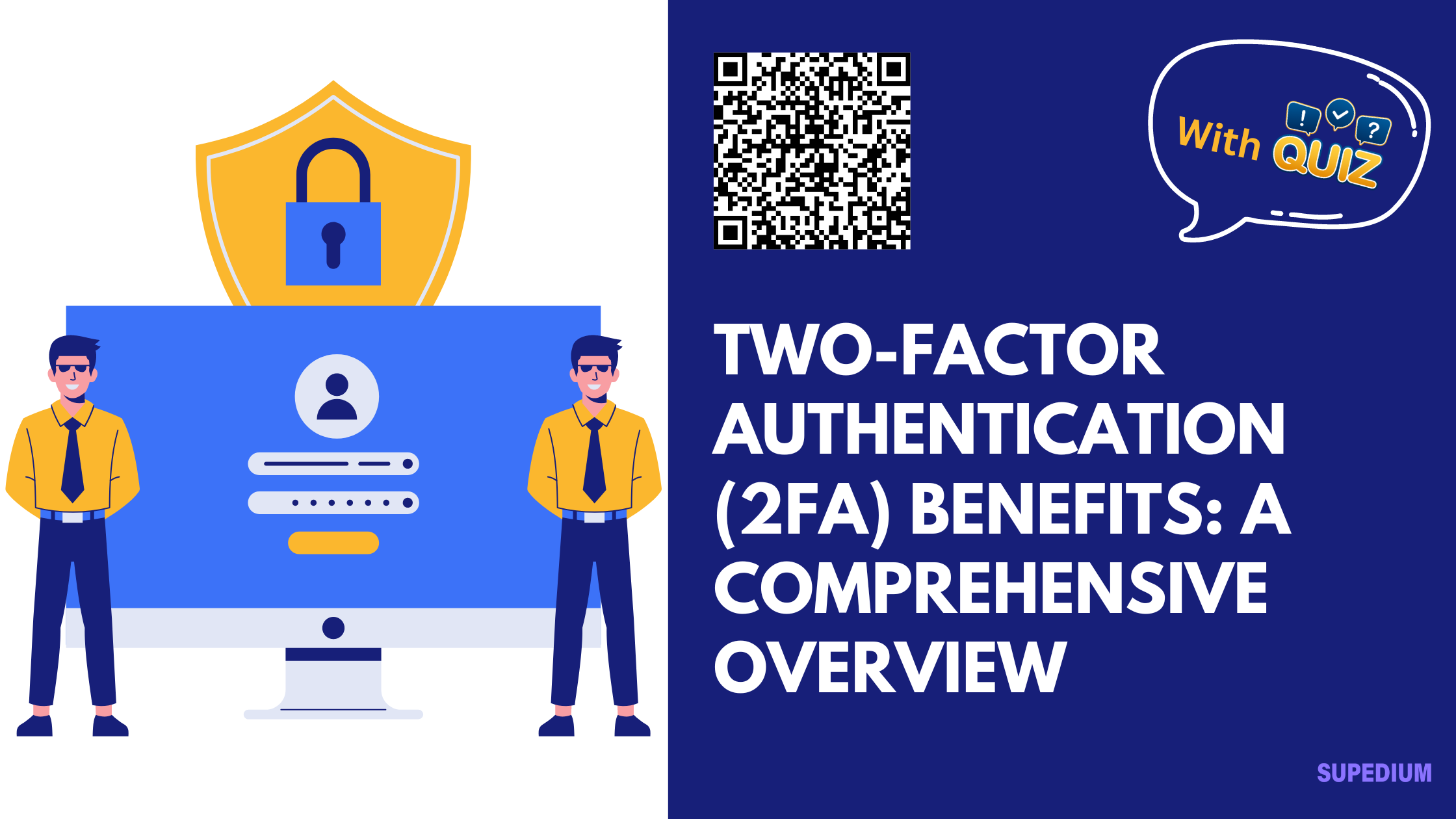Table of Contents
![]()
In an age where cyber threats are increasingly sophisticated and pervasive, securing digital assets has never been more critical. Two-Factor Authentication (2FA) stands out as a pivotal component in fortifying security measures. This article delves into the extensive benefits of 2FA, exploring its core advantages, practical applications, technical strengths, and future trends.
Introduction
Definition of Two-Factor Authentication (2FA)
Two-Factor Authentication (2FA) is a security process in which the user provides two distinct authentication factors to verify their identity. Unlike Single-Factor Authentication (SFA), which relies solely on something the user knows (like a password), 2FA adds an additional layer by requiring something the user has or is (like a smartphone or biometric identifier). This dual verification significantly enhances security.
Importance of 2FA in Modern Security
With the surge in cyber threats and data breaches, traditional password protection alone is no longer sufficient. 2FA offers an extra defense layer, making it a crucial measure for safeguarding sensitive information and maintaining secure systems.
Core Benefits of Two-Factor Authentication
Enhanced Security
One of the foremost benefits of 2FA is its ability to provide enhanced security. By requiring two forms of verification, 2FA makes unauthorized access far more difficult. This multi-layered defense reduces the risk of compromised credentials, providing robust protection against common attacks such as phishing, password theft, and keylogging. Even if an attacker acquires a user’s password, they still need the second factor to gain access.
Increased Confidence and Trust
2FA also bolsters user trust in service providers. For businesses, implementing 2FA not only enhances security but also demonstrates a commitment to protecting user data. This increased credibility can positively influence customer perception and trust, fostering stronger relationships and potentially attracting more clients.
Compliance with Regulations
Adhering to various legal and regulatory requirements is another significant advantage of 2FA. Regulations such as the General Data Protection Regulation (GDPR), Health Insurance Portability and Accountability Act (HIPAA), and Payment Card Industry Data Security Standard (PCI-DSS) often mandate robust security measures, including 2FA. Implementing 2FA helps organizations comply with these standards, avoiding potential legal repercussions and fines.
Practical Benefits
Ease of Implementation
2FA is versatile in its implementation methods, which include SMS-based codes, email-based codes, authenticator apps, hardware tokens, and biometric verification. This variety allows for seamless integration into existing systems and processes, catering to different user needs and preferences.
Cost-Effectiveness
While some may perceive 2FA as an added expense, its cost is minimal compared to the financial impact of data breaches. The investment in 2FA is often justified by the potential savings from avoiding costly breaches, legal issues, and reputational damage. A thorough cost-benefit analysis typically reveals that the financial outlay for 2FA is relatively small compared to the protection it offers.
User Experience
Modern 2FA solutions are designed to be user-friendly and minimally disruptive. With various options available, users can select the method that best suits their needs. This flexibility helps maintain a positive user experience while still providing the ultimate security benefits.
Technical and Functional Advantages
Enhanced Protection Mechanisms
2FA employs dynamic codes that change with each authentication attempt, unlike static codes used in some older systems. This dynamic nature, exemplified by Time-based One-Time Passwords (TOTP) and HMAC-based OTP (HOTP), enhances security by ensuring that codes are valid only for a short duration, making them more resistant to interception and misuse.
Reducing Risk of Credential Reuse
Credential reuse is a common issue in cybersecurity, where users employ the same password across multiple sites. 2FA mitigates this risk by requiring unique codes for each login attempt, thus providing an additional layer of protection even if credentials are compromised.
Monitoring and Logging
2FA also improves security through better monitoring and logging of authentication events. Detailed audit trails help organizations track authentication activities, identify suspicious behavior, and respond swiftly to potential security threats.
Addressing Potential Challenges
Usability Concerns
Despite its advantages, 2FA can present usability challenges, particularly for non-technical users. Ensuring that the system is intuitive and accessible is crucial to avoid alienating users. Proper education and support can mitigate these issues.
Backup and Recovery
Handling lost or stolen devices is another consideration. Effective 2FA systems provide backup codes and recovery options to ensure users can regain access without compromising security. Clear procedures for backup and recovery are essential for minimizing disruptions.
Privacy Considerations
Implementing 2FA involves handling sensitive information, which raises privacy concerns. It is vital for organizations to adopt robust data handling and storage practices, balancing security needs with user privacy to maintain trust and compliance.
Case Studies and Examples
Successful Implementation Scenarios
Numerous organizations have successfully implemented 2FA to enhance their security posture. Financial institutions, technology companies, and government agencies have all benefited from the added protection 2FA offers. For instance, major tech firms have reported significant reductions in unauthorized access attempts and data breaches since adopting 2FA.
Impact Analysis
The impact of 2FA is evident in the reduction of security breaches and improved user feedback. Organizations that have embraced 2FA often experience a lower incidence of security incidents and a higher level of user satisfaction due to the enhanced protection.
Future Trends and Developments
Emerging Technologies in 2FA
The future of 2FA includes advancements in biometric authentication, such as facial recognition and fingerprint scanning. Integration with artificial intelligence and machine learning is also on the horizon, promising even more sophisticated security measures.
Evolving Threat Landscape
As cyber threats continue to evolve, 2FA will need to adapt to new attack vectors. Future developments will focus on addressing emerging threats and enhancing the resilience of 2FA systems to ensure ongoing protection.
Conclusion
In summary, Two-Factor Authentication (2FA) offers significant benefits in terms of security, user confidence, and regulatory compliance. Its practical advantages, technical strengths, and ability to address challenges make it a crucial component of modern cybersecurity strategies. As technology and threats evolve, ongoing evaluation and improvement of 2FA systems will be essential for maintaining robust security.






Be the first to comment